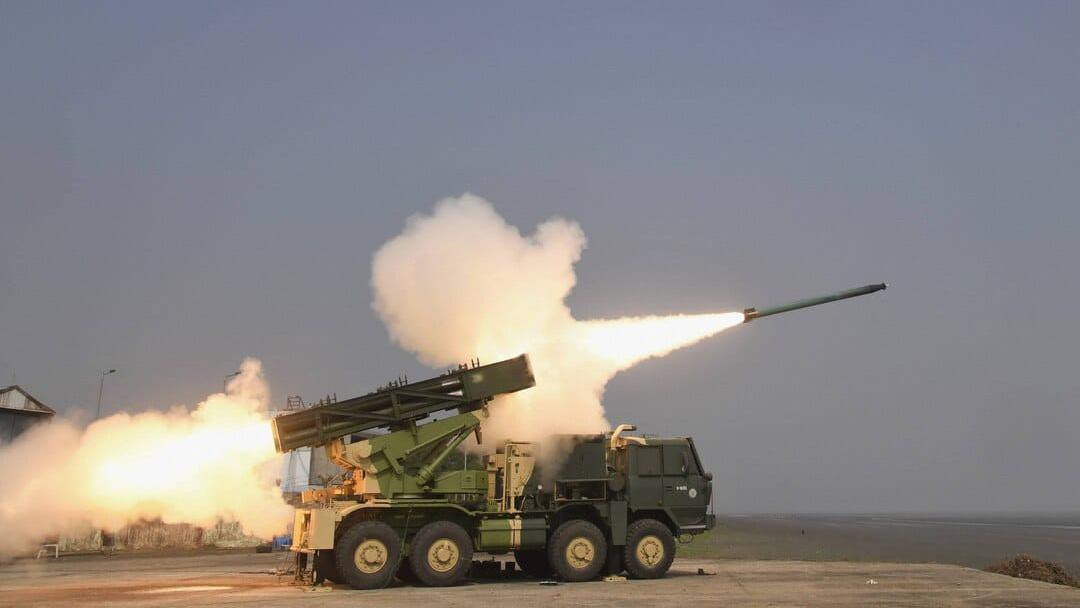Not 40 ton, we did deployed 55 ton tank in Ladakh along with 47 ton Vajra. But those 55 or 47 ton is with full battle load. Means it is inclusive of the 40 odd rounds it carries internally. But a rocket artillery like Pinaka is accompanied by atleast one resupply vehicle and one reloader cum supply vehicle. That's three vehicle convoy.yeah,, look at the range. max 50km for ATAGS. pinaka mk-2 can hit upto 60km. smerch can hit upto 90km
if you are able to field a 40 tonne tank at those locations, you can even field a 40 tonne rocket artillery.
You need to read about the Ramjet artillery program before making any statement. I am quoting the interview of Prof Shankar who is working on it.ramjet artillery will be extremely costly, you literally have liquid propellant with small fuel tank and ramjet engine coupled with a micro turbo pump and atomiser to release fuel into the engine per EACH SHELL.
the cost of manufacturing will be so high per each shell. not to mention the cost of training work force to assemble them. you are literally manufacturing small scale ramjet engines coupled with ordinary detonatable charged cells(6 or 7).
Ramjet artillery is based on solid fuel rather then liquid fuel.
On your high cost factor per shell, this is what he has to say.Prof Shankar: We expect to develop a working prototype within three to five years. Development of this shell would require a synergy between different types of engineering. We’ll have to combine expertise in Fundamental engineering of propulsion (solid propellants), structural design, a lot of design capability in geo-referencing and guidance with a lot of engineering capability and principles of rocket technology. In the case of a missile, we can design from scratch, but here we are taking an existing ramjet technology and fusing it with an existing shell to get something that doesn't exist. But if we manage to fit a ramjet into an artillery shell, it would pole vault us into the next generation.
A general arty shell costs 1 lakh/ unit. Even if the cost of a ramjet shell increases by 20 times, it would cost 20 lakh/unit. One Pinaka Mk1 unguided rocket with a range of 40 km costs 23 lakh/unit.Prof Shankar: Primarily this technology is a first for artillery shells. Being a new product and new technology, they tend to be very costly. But it is certainly less expensive when compared to missiles and other weapons that have a range of over 60kms. There is also scope for exporting this type of shell to friendly foreign countries.
Rocket artillery is used for area saturation attack. In mountainous warfare, it is more about point saturation rather then area saturation. You don't have the enemy spread over a huge area in mountains, but you would have specific locations which enemy would dominate. Example is in front of you during Kargil and Galwan.thats not all. a single artillery gun in itself is useless. you need to field atleast 10-15 guns to destroy an area each gun weighing 15 -20 tonnes. the same amount of destruction could be achieved by a single truck with 10-15 rockets in salvo firing.
the main issue is here.
rocket artillery
advantage : massive firepower, destruction and chaos in salvo under a minute. enemy has less time to react or even take cover. longer ranges.
disadvantage : reloading between salvos takes a lot of time. enemy, if survived might hit back.
gun artillery
advantage : sustained firepower for days and even weeks. denying enemy any offensive role. enemy has to literally wait until the artillery is gone. lower reload per each gun.
disadvantage : need to localise a lot of guns(a lot of mass) to destroy an area. enemy can easily survive and escape even if some % is lost. lower ranges. impractical to increase ranges. (however not impossible if you want to have a rail gun with 150km range)
same guns but better shells: like ramjet artillery : i have already explained it above in this comment.
So you need to hit a point accurately over and over again in mountainous warfare which could be achieved by Guns only. A rocket fired from tube number 2 would not hit the same spot as the one fired from tube number 1.
Moreover as I mentioned earlier, mountainous warfare is more of close combat warfare. So when you want to bring in artillery support within a few meters of your position, which one would you prefer? a 7.5 kg payload or 100 kg payload?
We share a 2,101 km of border with Pakistan where rocket artillery would play a huge and decisive role by area saturation attack. But we also share 4973 km of combined mountainous border with Pakistan and China where Guns would be more effective then rockets.
So our requirement of gun artillery is higher then rocket. We need increment not just in numbers, but also in range too. You can't replace Guns with Rockets.
Last edited:




